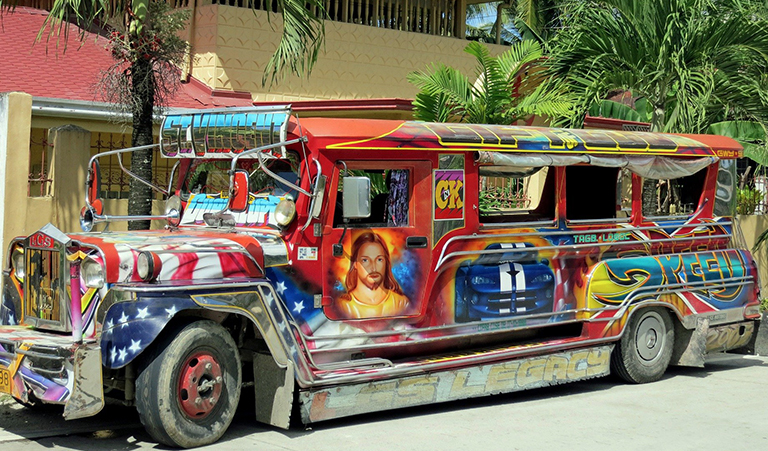Wherever you go in the Philippines, the most common form of public transportation is the ubiquitous jeepney, a wonderfully bizarre and usually extravagantly-colored contraption, which is actually a clever hybrid born out of necessity. When the Americans evacuated after WWII they left behind their open-top jeeps, small, square and basic vehicles built for function, pretty reliable but not too pretty. So, the Filipinos took them, elongated them and attached a roof, then placed two benches running down the sides in order to accommodate as many people as possible. Then they gave them character by making them into objects of art with vibrant and vivacious color schemes and they became the ‘local bus.’
I love using them – not least because it is here where you get to interact with the delightfully friendly and warm locals – but they can sometimes be cramped and sweaty affairs (there is no air-conditioning), and can also be a little confusing. So, here’s a short guide to help you understand them better.
First off, at the start of each journey or at certain important junctions, the jeepney will not move until it is full. This can be irritating as you sit there waiting for it to set off, but you have to understand that the drivers do not make a set wage but rather get paid by however many fares they take, so invariably (and understandably) they try to maximize their profits. So, if the jeepney is sitting there waiting for more fares, stand outside and wait rather than sit inside and suffer from the heat.
Also, due to the fact that Filipinos are very polite, and since personal space is not an issue in this country, more and more people will keep clambering aboard, so expect to be sitting comfortably one minute, then slowly getting more squashed as they journey goes on.
Each jeepney will have the destination written on the front window, and they tend to just go along the main roads without any detours. Once you get on, pass the fare to the passenger next to you (usually around P10) and they will in turn pass it down the line until it reaches the driver. This is actually a wonderfully communal way of doing things and is in keeping with the informal and laid back nature of Filipino culture, as well as the collective spirit with which things are done here.
There are not many actual designated stops as such, so it’s then important to keep a lookout for the road ahead since a jeepney will stop pretty much anywhere you tell it to – simply shout when you want to get off and the driver will stop.
They’re not particularly comfortable, they can get pretty hot, and they tend to stop many times en route, but they’re cheap and easy, and, best of all, they offer a simple yet enlightening glimpse into the lives of working class Filipinos.
